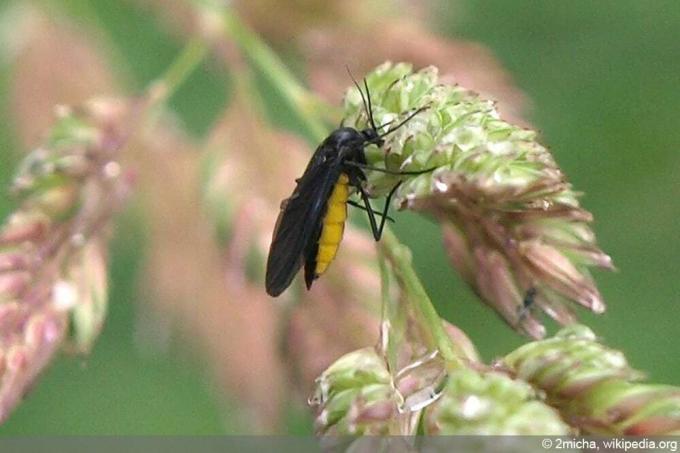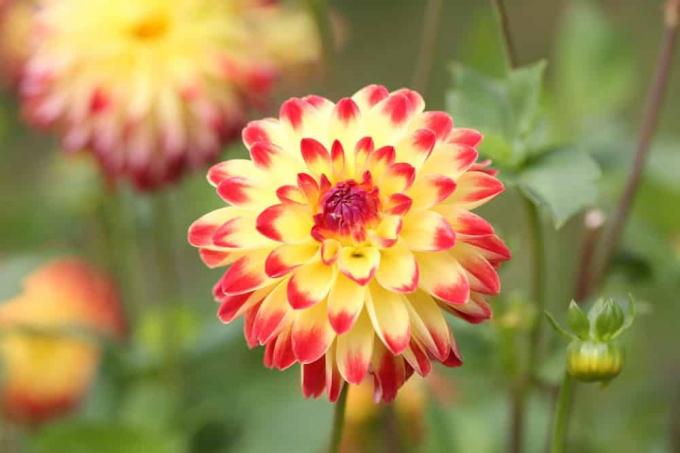

Table of contents
- Look
- life cycle
- eating behavior
- damage picture
- distribution
- combat
- SF nematodes
- BTI bacteria
Fungus gnats (Sciaridae) belong to the order Diptera, more precisely to the mosquito suborder (Nematocera). Around 1,800 species are known within the family. However, it is assumed that the known species are only a fraction of all species. A good 600 species are known in Europe alone. The fungus gnat is distributed worldwide. It even occurs in the Antarctic or in mountain regions over 4,000 meters above sea level. However, their preferred habitat are forests, moors, wet meadows or pastures. In other words, mosquitoes don't like environments that are too dry.
Look
Fungus gnats are between one and seven millimeters in length. Their body is narrow and dark in color. Characteristic are their dark wings, to which the mosquito owes its name. Fungus gnats have long legs. They also have 8- to 16-membered feelers. The larvae also have a slender body colored grayish white. The head capsule of the larvae is black. They are between three and six millimeters in size.
life cycle
The life cycle of fungus gnats takes about three to four weeks from egg to adult. Adult fungus gnats only live a few days after hatching from the pupa. Because their only purpose in life is the preservation of the species. Since 90 percent of the larvae are females, the fungus gnat has a very high reproductive potential compared to other animals. In order for the females to find a male partner, the mosquitoes live in large groups, sometimes consisting of several thousand of their own kind.
Once mating has taken place, the female lays up to 200 eggs in the moist soil. The larvae hatch from the transparent eggs after just seven to eight days. Like adult mosquitoes, they live in large groups. Up to 2,500 larvae can live together in one square meter. Pupation usually occurs in July and August.
eating behavior
Adult fungus gnats do not need food during their short lives. The larvae, on the other hand, eat leaves, bark, fungi, roots and other plant parts. That is why they are among the beneficials in nature, as they decompose the leaves in forests. In the garden, however, they are among the pests because they eat the roots of the lawn.
damage picture
You can recognize a plague of sciarid larvae by the fact that the top parts of the blades of grass die off at the beginning. The lawn then turns yellowish until it finally turns brown to black and finally dies off completely. If the infestation is extremely severe, entire sections of the lawn can even come loose from the ground.
distribution

Despite their wings, adult fungus gnats are very immobile, i.e. they cannot cover great distances. However, they are spread by the wind. The larvae can emigrate and thus contribute to the spread of the species. But they are also spread by humans, for example in peat, humus or potting soil.
combat
Fighting adult fungus gnats, especially if the animals have taken a liking to your lawn, is an impossibility. While yellow boards to which mosquitoes stick are recommended for indoor plants, this measure makes little sense in the garden. Therefore, you should immediately concentrate on fighting the larvae so that a new generation of fungus gnats cannot grow up.
There are two ways to successfully combat the larvae of the fungus gnat:
- Steinernema feltiae nematodes (SF nematodes)
- Bacillus thuringiensis israelensis (BTI bacteria)
SF nematodes
Nematodes are roundworms and are 0.8 millimeters in size. Because they are not visible to the naked eye, they are sold mixed with clay powder. SF nematodes come in different package sizes. In specialist shops, for example, there are 3 million SF nematodes for six square meters or 50 million nematodes for 100 square meters.
Tip:
Because SF nematodes are live beneficial insects, they can only survive for a few days in a cool place, e.g. B. be stored in the refrigerator.
For a successful fight, proceed as follows:
- SF nematodes or Dissolve mixture in water (stock solution)
- Dilute stock solution with water
- The amount of water depends on the area to be watered
- Water the lawn well

If larger quantities have to be applied, you should keep stirring the water-nematode mixture so that the nematodes do not settle on the ground. In addition, you should make sure that spray nozzles are not clogged. SF nematodes from specialist shops can be applied all year round at appropriate temperatures, which should be between 8 and 28 degrees Celsius. It is best to water the lawn with the nematodes when the sky is overcast, because the beneficial insects are extremely sensitive to light. The ideal time is in the evening hours.
Tip:
If you have successfully fought the larvae of the fungus gnat with the worms, then you should repeat the process after two to four weeks to be on the safe side.
Effect
SF nematodes love to eat the larvae of the fungus gnat. They feed on the body fluids of the larvae and at the same time infect them with a bacterium that kills the larvae. The "effect" of nematodes lasts about four weeks.
Tip:
SF nematodes can also be used preventively during sowing.
BTI bacteria
BTI bacteria, also known as B.t.i. abbreviated, is a so-called stomach poison. This means that the bacteria can only develop their effect when they have been eaten by the mosquito larvae. However, once they have reached the larvae's digestive tract, the poison kills the larvae within a few hours. Since BTI bacteria act selectively, they are not harmful to other living beings.
You can get BTI bacteria in tablet form from specialist retailers. They are dissolved in the irrigation water according to the package instructions. The lawn is then watered with the solution.
 garden editorial
garden editorial I write about everything that interests me in my garden.
Learn more about indoor plants in winter

Help: Poinsettia leaves are curling up
The pre-Christmas period without a poinsettia is hardly conceivable. It now comes in red, pink, and cream colored bracts, which are often mistaken for the flowers. Unfortunately, this plant is somewhat sensitive and therefore dependent on optimal conditions.

Overwinter hanging geraniums | 13 tips for the flower box
There are hardly any plants that add more color to a balcony than hanging geraniums. From spring to autumn they don't let the flow of flowers break off. As winter approaches, we should remember that they do not tolerate frost. That's how they survive.

Are cyclamen hardy? | 9 tips for wintering
The colorful blooming cyclamen is a popular houseplant that delights us with its blooms in the dark winter months. Few people know that some cyclamen species are even hardy and provide bright splashes of color in the garden during the cold season.

Hibernating Jasmine | 9 tips for the jasmine tree in winter
Jasmine is a popular plant because of its enchanting fragrance and decorative flowers. In order for this beauty to be preserved, however, the plant must be cared for and protected accordingly in winter. Our tips for wintering will help.

Hibernate Vanilla Flower – Instructions | Is she hardy?
The seductively vanilla-scented vanilla flower (Heliotropium arborescens), also known as the solstice or heliotrope, is a popular, long-flowering plant for window boxes and hanging baskets. With little effort, the non-hardy flower can be overwintered and cultivated for many years.

Dahlias hibernate - this is how you store dahlia bulbs correctly
Unfortunately, there are no hardy dahlias for the home garden. Only in its homeland of Mexico is a wild natural variety known that can also cope with frosts. The many cultivars that we have and that are so popular usually do not survive the winter outdoors.
